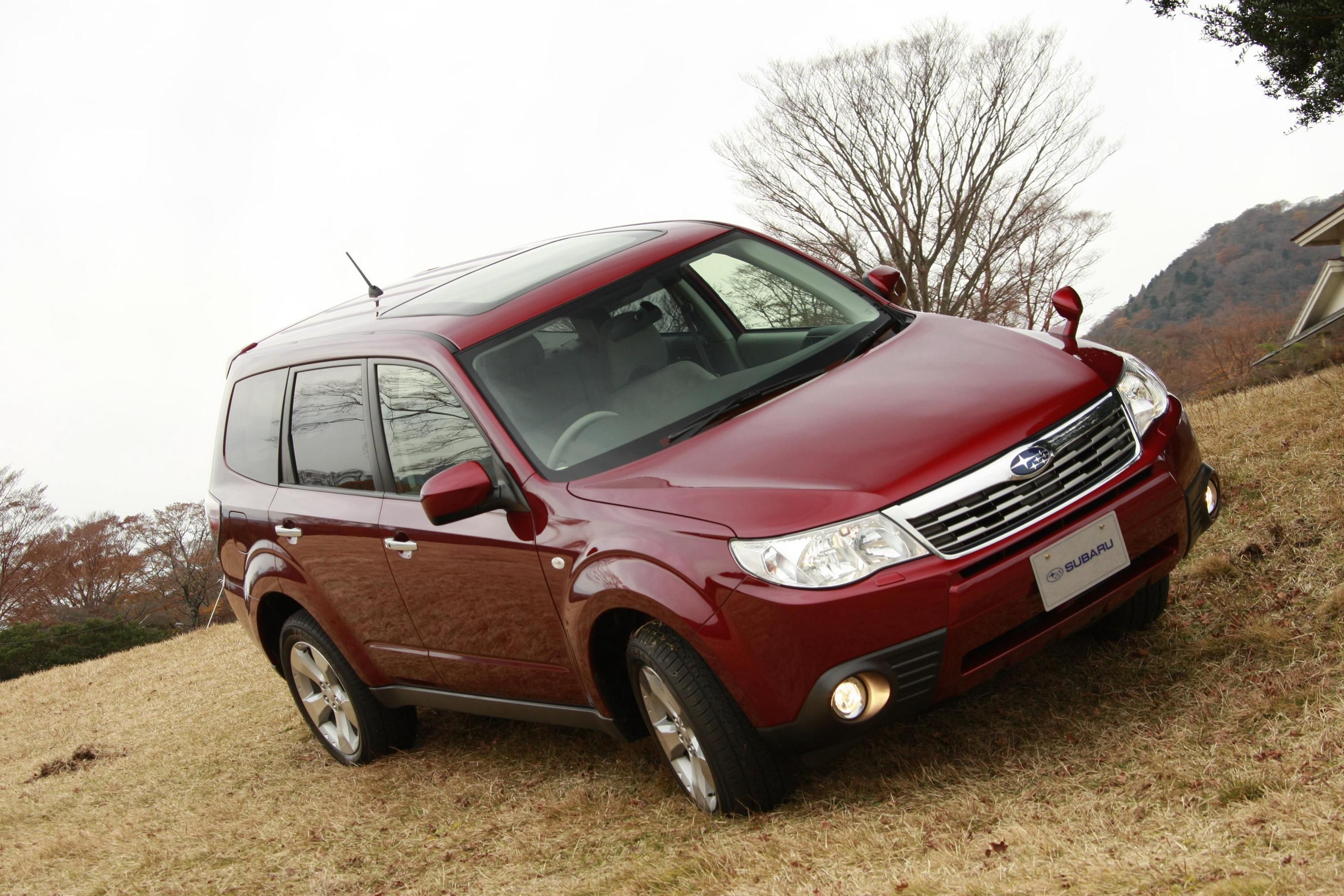Subaru today announced that the 2009 Subaru Forester earned the highest rating in the U.S. Department of Transportation's National Highway Traffic Safety Administration (NHTSA) New Car Assessment Program (NCAP) crash tests. The Subaru Forester received five stars in both the frontal and side-impact crash tests for all seating positions.
"Subaru customers have come to expect the highest level of safety in their vehicles," said Thomas J. Doll, Executive Vice President, Subaru of America, Inc. "The Subaru Forester continues to deliver the highest levels of occupant safety as evidenced by its recent five star performance in the NHTSA NCAP tests."
New for 2009, all Subaru Forester models feature standard side-curtain airbags with a rollover sensor, Vehicle Dynamics Control (VDC) stability and traction control system and Brake Assist safety system. A roll-over sensor activates seatbelt pre-tensioners and the side-curtain air bags.

Subaru Making Safety Standard
To Subaru, safety means more than protecting a car's occupants in the event of a collision. Ideally, a passenger vehicle should provide the driver with the means to help avoid hazardous situations. Subaru calls this concept Active Driving/Active Safety. Designing a vehicle for active safety gives a driver a strong sense of control, maneuverability and security.
Active Safety: Subaru Symmetrical All-Wheel Drive forms the core of the Subaru Active Driving/Active Safety concept. Symmetrical All-Wheel Drive gives a Subaru a significant traction advantage over two-wheel drive cars (front- and/or rear-wheel drive) on all road surfaces. On all Subaru models, the standard 4-channel / 4-sensor Anti-lock Brake System (ABS)
incorporates Electronic Brake-force Distribution (EBD). This system enhances braking performance and stability by actively optimizing braking force between the front and rear wheels according to how the vehicle is loaded with passengers and cargo.
Passive Safety: The compact Subaru Boxer engine helps enhance safety, because it allows more crush room in front and on the sides. Subaru vehicles are designed to allow the entire powertrain to slide under the car along the floor tunnel in a severe collision, helping to prevent intrusion into the passenger compartment. All Subaru models are built around a Ring Frame Reinforced body structure design that incorporates front and rear crumple-zone construction to absorb the energy of an impact and help protect the reinforced passenger compartment. Essentially, the Ring Frame Reinforced structure forms a series of "rings" around the passenger compartment, providing excellent protection in a variety of collision types. This structure increases cabin rigidity and can absorb impact energy from any direction.
Advanced Restraint Systems: All 2008 Subaru Impreza, Legacy, Outback and Tribeca models feature side curtain air bags (full side coverage) for head protection. The side curtain air bags deploy from the headliner. All models also employ the Subaru Advanced Frontal Airbag System. This intelligent air bag system employs dual-stage-deployment driver and front passenger air bags. A seat position sensor on the driver's seat track detects if the driver is sitting too close to the air bag, in which case the system would delay deployment of the air bag's second stage. The passenger side front seat incorporates an occupant detection module that detects weight on the passenger seat -- determining if it's a child or adult -- to control air bag deployment.
All Subaru models feature standard front seat side impact air bags for thorax-area protection. Mounted in the upper sides of the front seatbacks, the front seat side-impact airbags offer protection regardless of seat position.
The Subaru model lineup also incorporates electrically triggered pre-tensioners and force limiters in the front three-point seatbelts. These systems work together to gradually restrain the occupants and absorb the impact energy of a frontal collision. The seatbelt pre-tensioners operate simultaneously with the front air bags and cinch the front seatbelts to help restrain the driver and front passenger in their seats. Next, the mechanically operated torsion-bar force-limiters extend the belts to reduce the belt forces on the occupants' torsos. The seatbelt mechanism also absorbs energy through internal deformation.
All Subaru models are equipped with the LATCH system (Lower Anchors and Tethers for Children) for securing specially equipped child seats in the rear seat. Subaru sedan models are equipped with an internal emergency trunk release with a self-illuminating handle.

